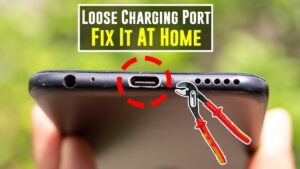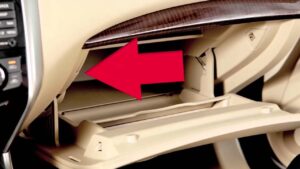Are you in need of guidance on understanding and choosing the right amperage for your 4 wheeler battery? Look no further! In this comprehensive guide to 4 wheeler battery amperage, we will delve into everything you need to know to make an informed decision. Whether you’re a seasoned enthusiast or a newbie to the world of 4 wheelers, this article will provide you with all the necessary information to ensure your battery’s performance matches your needs. So let’s dive right in and explore the intricacies of 4 wheeler battery amperage.
A Guide To 4 Wheeler Battery Amperage
Understanding 4 Wheeler Batteries and Amperage
When it comes to 4 wheelers, the battery is an essential component that powers the vehicle. The amperage of a 4 wheeler battery determines its capacity to provide electrical energy to start the engine and power the various electrical systems on the vehicle.
Amperage, commonly referred to as Amps, is the measure of the flow of electric current. In simple terms, it indicates how much electrical current a battery can deliver over a certain period. A higher amp rating means that the battery can provide a larger electrical current, which is crucial for starting the vehicle and operating its electrical accessories.
The Importance of Choosing the Right Battery Amperage
Selecting the appropriate battery amperage for your 4 wheeler is crucial for proper performance and longevity. Using a battery with insufficient amperage may result in difficulty starting the engine, frequent battery drain, and limited power for electrical accessories. On the other hand, using a battery with excessive amperage may lead to unnecessary cost and weight.
To ensure that you choose the right battery amperage for your 4 wheeler, consider the following factors:
1. Engine Size
The size and power of your 4 wheeler’s engine are important factors to consider when selecting the battery amperage. Engines with larger displacements require batteries with higher amperage to provide the necessary starting power. It’s important to consult your 4 wheeler’s manual or seek professional advice to determine the appropriate amperage for your specific engine size.
2. Electrical Accessories
Consider the electrical accessories you intend to power with the battery, such as headlights, winches, or audio systems. These accessories draw additional power from the battery, and the amperage should be sufficient to handle the demands. If you plan to add aftermarket accessories, make sure to account for their power requirements when choosing the battery amperage.
3. Climate
The climate in which you primarily use your 4 wheeler can impact battery performance. Colder temperatures can affect the battery’s ability to provide sufficient current, especially during engine startup. In cold climates, it’s advisable to choose a battery with higher cold cranking amps (CCA), which indicates its ability to deliver current in cold weather conditions.
4. Maintenance Requirements
Consider your preference for battery maintenance. Some batteries require regular maintenance, such as checking electrolyte levels and adding distilled water. These maintenance tasks are typically more common in batteries with higher amperage. If you prefer a maintenance-free option, there are batteries available with advanced technologies that eliminate the need for regular maintenance.
Types of 4 Wheeler Batteries
4 wheeler batteries come in various types, each with its own advantages and considerations. Understanding the different types can help you make an informed decision about the appropriate battery for your needs. Here are some common types of 4 wheeler batteries:
1. Conventional Lead-Acid Batteries
Conventional lead-acid batteries have been widely used in the automotive industry for decades. These batteries are known for their reliability and affordability. They consist of lead plates submerged in an electrolyte solution of sulfuric acid. Conventional lead-acid batteries can have different amperage ratings, making them suitable for a range of 4 wheelers.
2. Absorbent Glass Mat (AGM) Batteries
AGM batteries are a type of lead-acid battery that uses a fiberglass mat to absorb the electrolyte solution. This design offers several advantages over conventional lead-acid batteries. AGM batteries are maintenance-free, resistant to vibration, and have a higher resistance to deep discharge. They are also known for their exceptional cranking power, making them ideal for demanding applications.
3. Lithium-Ion Batteries
Lithium-ion batteries are becoming increasingly popular in the automotive industry due to their lightweight and high energy density. These batteries provide excellent cranking power, longer lifespan, and faster recharge times compared to traditional lead-acid batteries. However, they are generally more expensive than other battery types.
4. Gel Batteries
Gel batteries are another type of lead-acid battery that uses a gel-like electrolyte instead of a liquid solution. The gel electrolyte makes these batteries spill-proof and resistant to vibration, which is advantageous for off-road applications. Gel batteries are also known for their deep-cycle capabilities, making them suitable for powering electrical accessories for extended periods.
The Impact of Battery Amperage on Performance
The amperage of a 4 wheeler battery directly affects its performance in various ways, including starting power, reserve capacity, and overall longevity. Here’s how battery amperage impacts the performance of your 4 wheeler:
1. Starting Power
The battery amperage plays a vital role in providing the necessary current to start the engine. Higher amperage batteries deliver more cranking power, which is essential for starting the engine, especially in cold weather conditions. A battery with sufficient amperage ensures quick and reliable engine starts.
2. Reserve Capacity
Reserve capacity refers to the amount of time a battery can continuously supply power before it becomes discharged. Batteries with higher amperage typically have a higher reserve capacity, allowing you to power electrical accessories for longer periods without draining the battery excessively. This is particularly useful when camping or engaging in activities that require extended use of electrical accessories.
3. Longevity
Battery amperage also affects the overall lifespan of the battery. Higher amperage batteries tend to have thicker and more durable plates, which contribute to a longer lifespan. Additionally, batteries with higher amperage often have better construction and technology, making them more resistant to vibration and other harsh conditions that can impact battery life.
Maintaining and Charging Your 4 Wheeler Battery
Proper maintenance and charging practices are essential to ensure the longevity and optimal performance of your 4 wheeler battery. Here are some tips to help you maintain and charge your battery effectively:
1. Regular Inspections
Periodically inspect your battery for signs of damage, such as corrosion, leaks, or loose connections. Clean any corrosion using a mixture of baking soda and water, and ensure the battery terminals are tight and free of debris.
2. Charging Practices
Follow the manufacturer’s recommendations for charging your battery. Overcharging or undercharging can affect its lifespan and performance. Consider using a smart charger that automatically adjusts the charging rate based on the battery’s needs.
3. Proper Storage
If you store your 4 wheeler for an extended period, it’s important to properly store the battery. Disconnect the negative terminal to prevent any residual drain, and store the battery in a cool, dry place away from direct sunlight. If available, use a battery maintainer to keep the battery charged during storage.
4. Battery Replacement
Even with proper maintenance, batteries will eventually reach the end of their lifespan. It’s important to monitor the performance of your battery and replace it when necessary. Consult your 4 wheeler’s manual or seek professional advice to ensure you choose the right replacement battery with the appropriate amperage.
Remember that battery amperage is just one aspect to consider when choosing and maintaining your 4 wheeler’s battery. It is equally important to follow the manufacturer’s guidelines, consult your vehicle’s manual, and seek professional advice when needed. By understanding the importance of battery amperage and taking proper care of your 4 wheeler battery, you can ensure reliable performance and maximize its lifespan.
Frequently Asked Questions
How does the amperage of a 4-wheeler battery affect its performance?
The amperage of a 4-wheeler battery determines its power output and performance. Higher amperage batteries provide more power, allowing the 4-wheeler to start easily and run smoothly. Lower amperage batteries may struggle to deliver enough power, particularly in colder temperatures or when additional electrical accessories are being used.
What is the ideal amperage for a 4-wheeler battery?
The ideal amperage for a 4-wheeler battery depends on the specific vehicle and its power requirements. It is crucial to consult the owner’s manual or seek guidance from a reputable battery retailer to ensure the correct amperage for your 4-wheeler. Generally, a battery with an amperage between 200 and 350 CCA (Cold Cranking Amps) is suitable for most 4-wheelers.
Can a battery with higher amperage damage a 4-wheeler?
No, a battery with higher amperage will not damage a 4-wheeler. In fact, a battery with higher amperage can provide better performance and reliability, especially in extreme weather conditions or when the vehicle has additional electrical demands. It is essential to ensure that the physical dimensions of the battery fit the vehicle’s battery compartment properly.
What are the consequences of using a battery with lower amperage than recommended?
Using a battery with lower amperage than recommended can lead to various issues. The most common consequence is difficulty in starting the 4-wheeler, particularly in cold weather. The battery may not have enough power to crank the engine effectively. Additionally, a low amperage battery may struggle to support the electrical load of accessories, resulting in decreased performance or even premature battery failure.
Is it necessary to match the amperage rating when replacing a 4-wheeler battery?
Yes, it is crucial to match the amperage rating when replacing a 4-wheeler battery. Choosing a battery with a different amperage can cause compatibility issues and affect the vehicle’s performance negatively. It is recommended to consult the owner’s manual or seek advice from a reputable battery retailer to ensure you select a battery with the correct amperage for your 4-wheeler.
Can a higher amperage battery improve the performance of a 4-wheeler with many electrical accessories?
Yes, a higher amperage battery can improve the performance of a 4-wheeler with many electrical accessories. Adding accessories such as winches, light bars, or sound systems can put an extra strain on the battery. A higher amperage battery can provide the additional power required to handle the increased electrical load, ensuring smooth operation and preventing potential power drain issues.
Final Thoughts
In conclusion, understanding the importance of 4 wheeler battery amperage is essential for maintaining optimal performance and longevity of your vehicle. By choosing the right amperage, you can ensure that your battery provides sufficient power to start the engine and run various electrical components. It is crucial to consider factors such as climate, usage, and vehicle specifications when selecting the appropriate battery amperage. Regular maintenance and monitoring the battery’s condition will help maximize its lifespan. So, whether you are a seasoned rider or a beginner, this guide to 4 wheeler battery amperage will assist you in making an informed decision for your vehicle’s power needs.



